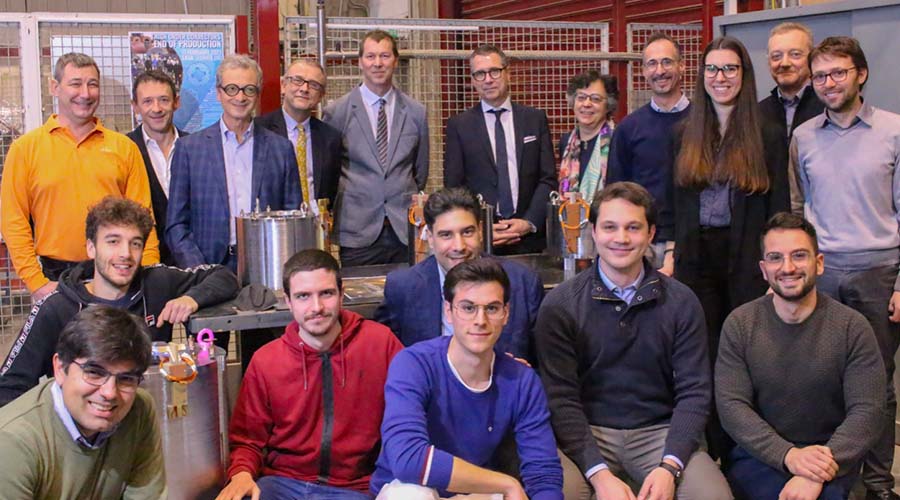
The high-order corrector magnets (HOCMs) for the High-Luminosity LHC project, which aims to enhance the Large Hadron Collider, scheduled to start operating in 2029, have been delivered to CERN. The HOCMs are the first devices of the future machine to be produced and will be crucial for increasing the LHC's performance: they will provide the necessary magnetic field corrections for the magnets responsible for focusing and separating the proton beams before and after their interactions in the ATLAS and CMS experiments. This achievement marks a significant milestone towards HL-LHC, thanks to the central contribution of the INFN, which has been involved in the production of HOCMs since the early stages through the Laboratory of Accelerators and Applied Superconductivity (LASA).
In addition to developing and producing five different types of HOCMs, LASA, in collaboration with CERN, tested the magnets' operation at its facility, ensuring that all prototypes comply with the required performance requirements in terms of field quality and of cooling performances. This allowed the serial production of 54 HOCMs to begin.
The INFN was also responsible for qualifying and monitoring all the production steps required, which were entrusted to the Italian company SAES RIAL Vacuum (SRV). The subsequent tests and qualifications of the manufactured magnets were carried out at the LASA laboratory and at CERN, where the magnets were ultimately integrated. The last magnet was delivered to CERN on February 17, 2023, in line with the project schedule.
According to Lucio Rossi, former HL-LHC project leader and now coordinator of the INFN-Accelerators Committee, “the successful completion of the HOCM project is a significant achievement for High-Luminosity LHC and would not have been possible without close collaboration between the scientific world and industry.”
“This project,” says Rossi, “was the result of intense and coordinated work between INFN, CERN, and industrial partners, and the successful on-time delivery of all 54 magnets attests the hard work, dedication, and expertise of all the people involved in the project.”
“The SAES RIAL Vacuum and SAES Getters teams,” comments Paolo Manini, HOCM contract manager for SAES, “worked closely with INFN and CERN to build and assemble the HOCMs, ensuring that they met the required specifications and quality standards. This project required a high level of precision and competence, and I am grateful to our group for their hard work and dedication. I am extremely proud of the success of our collaboration with INFN and CERN. The completion of this project not only marks a significant milestone for the HL-LHC project but has also allowed us to develop new know-how and expand our business in the field of superconducting magnets.”
“I consider myself fortunate and proud to have led this project and to have worked alongside so many talented people in this field”, explains Marco Statera, INFN researcher of the Milan division and coordinator of the HOCM project. “Now I am eager to see the HL-LHC project realized and the many other important developments that it will bring in the field of accelerator physics. The result we have achieved demonstrates that collaboration between scientific and industrial partners in pursuing a common goal is a driver of innovation and progress, which often extends well beyond the scope of scientific research.”
“It is particularly noteworthy that the production of all 54 magnets was completed within the scheduled timeframe, and we are grateful to everyone who contributed to this achievement,” comments Oliver Brunig, HL-LHC project leader. “We are also very pleased that the HOCM project has opened up new commercial opportunities for SAES in the field of superconducting magnets. This once again highlights the potential for technology transfer and the economic benefits from scientific research.






